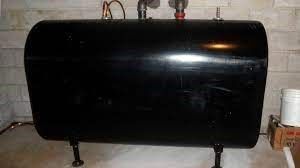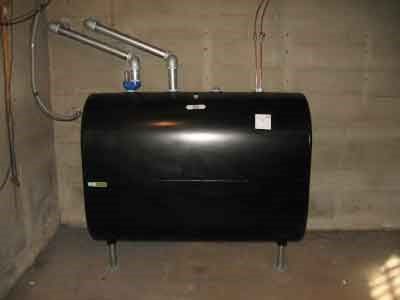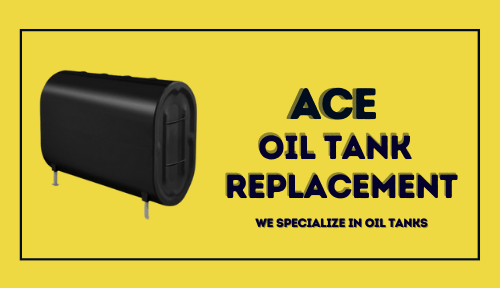How Much Does a New Oil Tank Cost? Calculate Costs
Curious about the new oil tank cost? Prices typically range from $1,000 to $2,500, depending on factors such as size, material, and installation requirements.
Wondering about the new oil tank cost? Contact local suppliers and contractors to get quotes tailored to your specific needs and budget.
The cost of a new oil tank can vary significantly depending on several factors, including the size of the tank, the type of material (steel or fibreglass), and the complexity of the installation. On average, you can expect to pay between £1,500 and £4,000 for a new residential oil tank, including the cost of the tank itself and the labor required for installation.
Key Takeaways:
- The cost of a new oil tank can range from £1,500 to £4,000, depending on various factors.
- Tank size, material (steel or fiberglass), and installation complexity are the main cost drivers.
- Proper maintenance and regular inspections can extend the lifespan of your oil tank.
- Hiring a professional installer with the necessary licenses and certifications is crucial for a safe and compliant installation.
- Considering the heating requirements of your home is essential when choosing the right oil tank.
Understanding Oil Tank Replacement Costs
When determining the cost of a new oil tank, there are several key factors to consider. The price can vary significantly depending on the size of the tank, the type of material used (steel or fiberglass), and the complexity of the installation process. Understanding these factors can help you budget accurately for your new oil tank and ensure you make an informed decision.
Factors Affecting Oil Tank Prices
The cost of a new residential oil tank is influenced by a variety of elements, including the tank's size, material, and any additional features or customizations. The type of installation required, whether above-ground or underground, can also impact the overall price. Additionally, the location and accessibility of the installation site can affect labor costs and the complexity of the project.
Tank Size and Capacity Considerations
One of the primary factors determining the oil tank installation cost is the size and capacity of the tank. Larger tanks, typically ranging from 1,000 to 2,500 gallons, will generally cost more than smaller 275 or 550-gallon models. The size of the tank you require will depend on the heating needs of your home and the amount of fuel you typically consume.
Above-Ground vs. Underground Installations
The location of the oil tank can also have a significant impact on the overall domestic heating oil tank prices. Above-ground tanks are typically less expensive to install than underground tanks, as they require less excavation work and have simpler connections to the heating system. However, underground tanks may be preferred in some cases due to space constraints or aesthetic considerations.
When evaluating the cost of a new oil tank replacement, it's essential to consider all of these factors to ensure you select the most suitable and cost-effective option for your home. By understanding the various elements that influence the price, you can make an informed decision and budget accordingly.
How Much Does A New Oil Tank Cost
When it comes to the cost of a new oil tank for your home, there are several factors to consider. The average pricing for a residential oil tank can range from £1,500 to £4,000, depending on the size, material, and complexity of the installation.
Average Pricing for Residential Oil Tanks
The size of the oil tank is one of the primary drivers of the overall cost. Smaller 1,000-litre tanks typically range from £1,500 to £2,500, while larger 2,500-litre tanks can cost between £2,500 and £4,000. The type of material also plays a role, with steel tanks generally being more affordable than their fiberglass counterparts.
Additional Installation and Labor Fees
In addition to the cost of the oil tank itself, you'll also need to factor in the labour and installation fees. Depending on the complexity of the job, the installation can add an extra £500 to £1,500 to the total cost. This includes tasks such as removing the old tank, preparing the site, and properly connecting the new tank to your home's heating system.
| Item -Type of Oil Tank | Average Cost |
|---|---|
| 1,000-litre Steel Oil Tank | £1,500 - £2,000 |
| 1,000-litre Fiberglass Oil Tank | £2,000 - £2,500 |
| 2,500-litre Steel Oil Tank | £2,500 - £3,500 |
| 2,500-litre Fiberglass Oil Tank | £3,000 - £4,000 |
| Installation and Labor Fees | £500 - £1,500 |
It's important to note that the final cost of a new oil tank can also be influenced by factors such as the location of your home, the accessibility of the installation site, and any necessary permits or inspections required by local authorities. Working with a reputable oil tank supplier and installer can help ensure a smooth and cost-effective process.
Choosing the Right Oil Tank for Your Home
When it comes to selecting a new oil tank for your home, there are two primary material options to consider: steel and fiberglass. Each type has its own unique advantages and drawbacks, so it's important to carefully evaluate your specific requirements and preferences to make an informed decision.
Steel vs. Fiberglass Oil Tanks
Steel oil tanks are a traditional and widely used option, known for their durability and long-lasting performance. These tanks are often more affordable than their fiberglass counterparts and are available in a range of sizes to suit different heating requirements. However, steel tanks are susceptible to corrosion over time, which can lead to costly repairs or even the need for replacement.
Fiberglass oil tanks, on the other hand, are becoming increasingly popular due to their resistance to corrosion and ability to withstand harsh environmental conditions. These tanks are lightweight, making them easier to install, and they often come with longer warranty periods than steel tanks
. While the initial cost of a fiberglass tank may be higher, their longevity can make them a worthwhile investment in the long run.
Assessing Your Home's Heating Requirements
The size and capacity of your new oil tank should be based on your home's heating needs. Factors such as the size of your living space, the number of occupants, and the efficiency of your heating system will all play a role in determining the appropriate tank size. Consulting with a professional oil tank supplier or a reputable heating and plumbing contractor can help you determine the ideal tank size for your home, ensuring that you have sufficient fuel storage to meet your heating demands.
Whether you choose a steel or fiberglass oil tank, it's essential to carefully consider the cost, durability, and suitability of the tank to ensure that it meets your home's heating requirements and provides reliable, long-term performance.
Extending the Lifespan of Your Oil Tank
Proper maintenance and regular inspections are crucial for extending the lifespan of your oil tank and ensuring its safe operation. By taking proactive steps, you can help prevent costly repairs or premature replacement of your residential oil storage tank.
Regular Maintenance and Inspections
Scheduling periodic maintenance and inspections for your domestic heating oil tank is essential to identify any issues early on and address them before they escalate. This may include checking for signs of oil tank deterioration, ensuring proper functioning of the tank's components, and addressing any necessary repairs or adjustments.
It is recommended to have your oil tank inspected by a professional oil tank supplier or certified technician at least once a year, or more frequently if your tank is older or you notice any concerning changes.
Signs of Oil Tank Deterioration
Being vigilant and recognizing the signs of oil tank deterioration can help you take proactive measures to extend the lifespan of your tank. Some common indicators of potential issues include:
- Visible rust, cracks, or leaks on the tank's surface
- Unusual noises or vibrations coming from the tank
- Decreased fuel efficiency or unexpectedly high oil consumption
- Staining or discoloration around the tank's base or connections
If you notice any of these signs, it is crucial to have a professional oil tank installer or fuel oil tank replacement specialist inspect the tank and recommend the appropriate course of action to address the problem.
Hiring Professional Oil Tank Installers
When it comes to installing a new oil tank, it's important to work with a professional heating and plumbing contractor who has the necessary expertise and certifications. Hiring the right installer can ensure the job is done safely, efficiently, and in compliance with local regulations. Look for contractors who specialize in domestic heating oil tank replacement and installation, as they will have the knowledge and experience to handle the project properly.
Verifying Licenses and Certifications
Before hiring an oil tank installer, be sure to ask about their qualifications and licensing. Reputable contractors should be able to provide documentation demonstrating their expertise, such as relevant trade certifications, licenses, and insurance coverage. This ensures that the work will be carried out to the highest standards and in accordance with all applicable safety and building codes.
Assessing Service Warranties and Guarantees
Additionally, inquire about the warranties and guarantees offered by the oil tank installer. A professional contractor should stand behind their work and provide a warranty on the new tank and installation services. This gives you peace of mind and protection in case any issues arise in the future. Compare the warranty offerings of different installers to ensure you're getting the best value for your investment.
Conclusion
Installing a new oil tank for your home can be a significant investment, but it's a necessary one to ensure the safe and efficient operation of your heating system. The cost of a new oil tank can range from £1,500 to £4,000, depending on factors such as the size, material, and complexity of the installation. Whether you're replacing an existing tank or installing a new one in a new home, it's crucial to work with a qualified professional to ensure the job is done correctly and in compliance with all relevant regulations.
By understanding the various factors that influence the cost of a new oil tank, you can make an informed decision and budget accordingly. Regular maintenance and inspections can also help extend the lifespan of your oil tank, potentially delaying the need for a costly replacement. Ultimately, investing in a high-quality oil tank is an important step in maintaining the comfort and safety of your home.
Remember, the cost of a new oil tank is just one aspect of the overall expenses associated with heating your home with oil. You'll also need to factor in the ongoing costs of fuel, delivery, and any necessary repairs or maintenance. By planning ahead and working with reliable professionals, you can ensure that your home's heating system continues to function efficiently and cost-effectively for years to come.
FAQ
How much does a new oil tank cost?
The cost of a new oil tank can vary significantly depending on several factors, including the size of the tank, the type of material (steel or fiberglass), and the complexity of the installation. On average, you can expect to pay between £1,500 and £4,000 for a new residential oil tank, including the cost of the tank itself and the labor required for installation.
What factors affect the price of an oil tank? (Cost to replace)
When determining the cost of a new oil tank, there are several key factors to consider: - Tank size and capacity - Above-ground vs. underground installations - The type of material (steel or fiberglass) - The complexity of the installation process - Additional labor and installation fees
What are the average prices for residential oil tanks?
The cost of a new oil tank can vary significantly, but here are some estimates for average pricing: - Steel oil tanks: £1,500 to £2,500 - Fiberglass oil tanks: £2,000 to £3,000 - Underground oil tanks: £3,000 to £4,000 - Additional installation and labor fees: £500 to £1,000
Should I choose a steel or fiberglass oil tank?
When it comes to choosing a new oil tank for your home, there are two primary material options to consider: steel and fiberglass. Steel tanks are generally more affordable, but they are susceptible to corrosion and may have a shorter lifespan. Fiberglass tanks, on the other hand, are more resistant to corrosion and can last for decades, but they are typically more expensive. The choice between steel and fiberglass will depend on your budget, the specific requirements of your home, and your long-term heating needs.
How can I extend the lifespan of my oil tank?
Proper maintenance and regular inspections are crucial for extending the lifespan of your oil tank and ensuring its safe operation. This includes: - Scheduling annual inspections by a professional - Keeping the tank and surrounding area clean and free of debris - Monitoring for signs of rust, corrosion, or other deterioration - Replacing the tank if it shows significant signs of wear or damage
How do I find a reputable oil tank installer?
When it comes to installing a new oil tank, it's important to work with a professional heating and plumbing contractor who has the necessary expertise and certifications. Look for installers who: - Are licensed and certified to work with oil tanks - Offer warranties and guarantees on their work - Have a proven track record of successful installations - Can provide references from past customers
Your home heating system helps to keep the winter chill at bay during the coldest months of the year. The oil storage tank is an integral component of this system that provides your furnace with the fuel it needs to continue to produce heat for your home on demand. Choosing the right oil tank service provider ensures you receive expert care and quality products that will enable you to keep your home comfortably heated through the winter, while avoiding potentially disastrous leaks and other hazards that can affect your health and the environment. Ace Oil Tank Replacement is the leading provider of aboveground oil tank services, including installations, oil tank replacement services, and oil tank removal. With extensive experience acquired through years of serving customers throughout Springfield, Massachusetts, you can entrust us to deliver the oil storage tank solutions you’re looking for.



